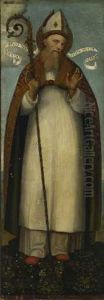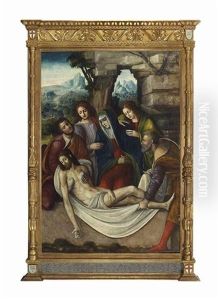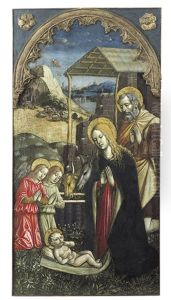Lorenzo Fasolo Paintings
Lorenzo Fasolo, an Italian painter from the Renaissance era, was born in 1463 in Pavia, Lombardy. His life and work are often overshadowed by the luminaries of his time, yet Fasolo contributed significantly to the art world of northern Italy during the late 15th and early 16th centuries. His artistic journey reflects the transition from the late Gothic style to the emerging Renaissance sensibilities, embodying the changes in artistic expression during this pivotal period in art history.
Fasolo likely received his initial training in Lombardy, an area rich with artistic activity and innovation during the Renaissance. Although specific details about his early education are scarce, it is believed that he was influenced by Leonardo da Vinci and other prominent artists who were active in the area. Fasolo’s work is characterized by its vivid colors, attention to detail, and the incorporation of both religious and secular themes. He was adept at fresco and tempera painting, techniques that were popular among his contemporaries.
Throughout his career, Fasolo worked on various commissions, including altarpieces, religious frescoes, and portraits, which were common genres of the time. His works are primarily found in churches and collections in and around Pavia, showcasing the local demand for his artistic skills. One of his most notable contributions is the fresco work in the Certosa di Pavia, a historic monastery near Milan. These works exemplify his mastery of the fresco technique and his ability to convey spiritual themes with emotional depth and nuance.
Despite his contributions to the Italian Renaissance, many details of Fasolo's life remain obscure, and his work was for a long time underappreciated by both contemporaries and art historians. However, recent scholarship has begun to shed more light on his career, highlighting his role in the development of Renaissance art in Lombardy. Lorenzo Fasolo passed away in 1518, leaving behind a legacy that, though not as well-known as that of his contemporaries, significantly enriched the Italian artistic heritage.



